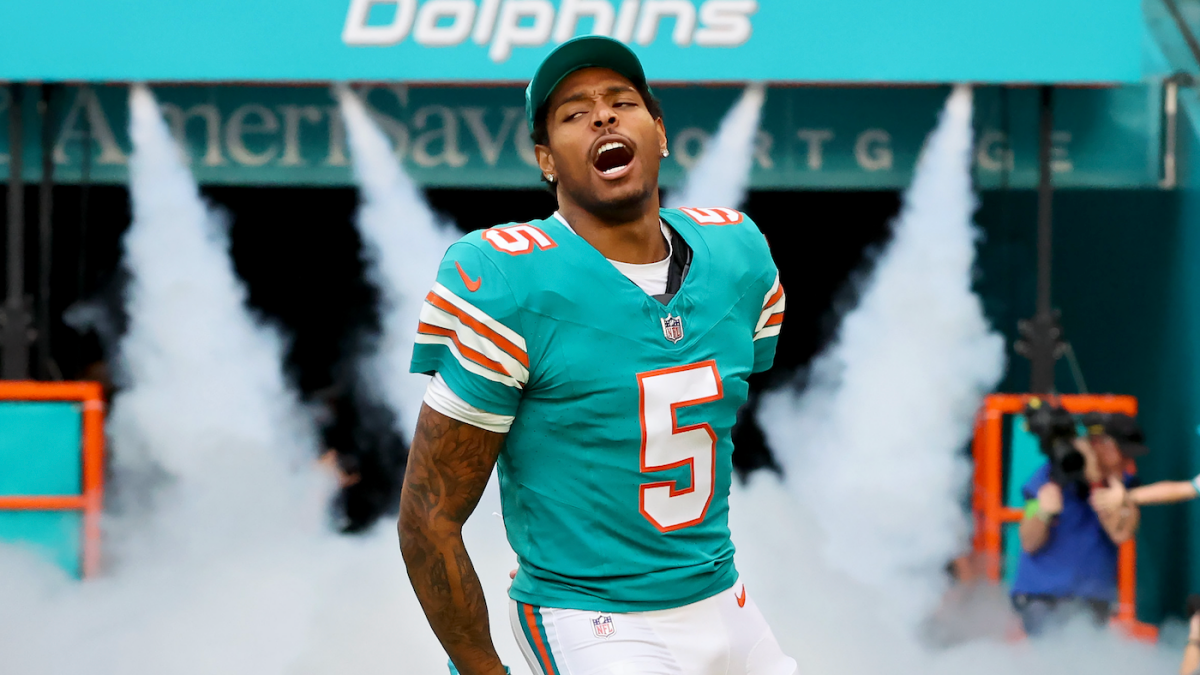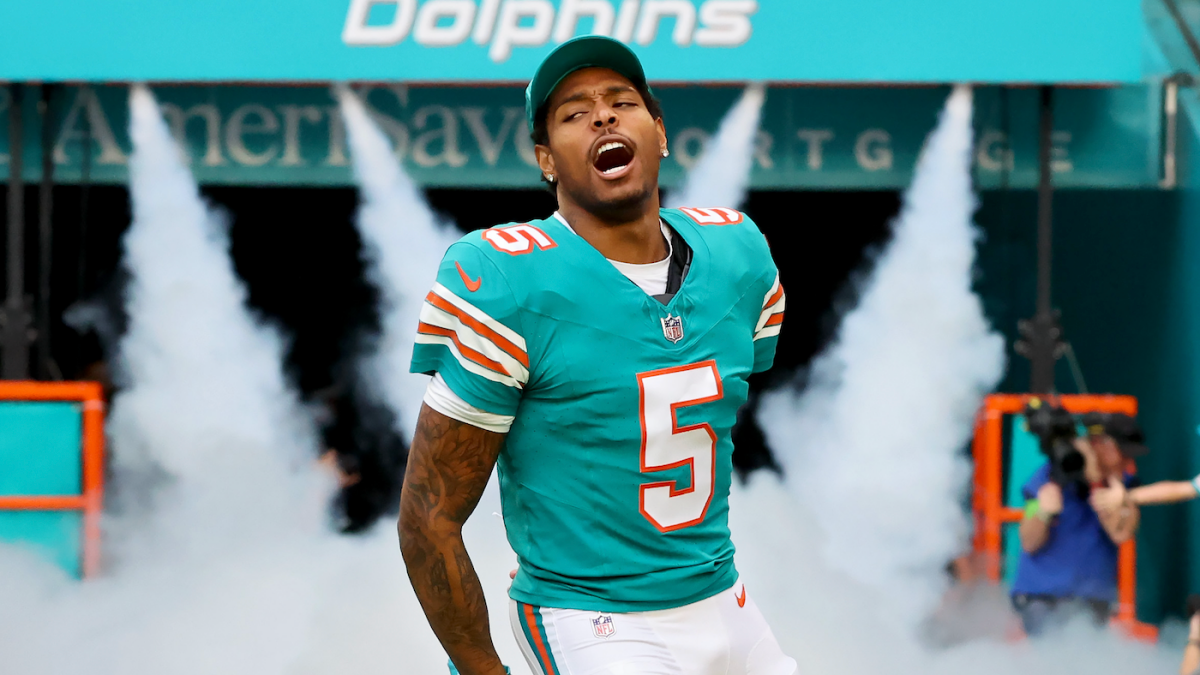The Pittsburgh Steelers’ acquisition of Jalen Ramsey from the Miami Dolphins in exchange for Minkah Fitzpatrick is a move that has sent shockwaves through the NFL. This trade is not just a simple swap of two elite defensive backs; it represents a strategic overhaul for both teams, with significant implications for their immediate and long-term futures. The deal underscores the Steelers’ commitment to building a dominant defense capable of competing at the highest level, while the Dolphins appear to be prioritizing financial flexibility and long-term roster construction.
The Trade Details: A High-Stakes Swap
At the heart of this blockbuster trade is the direct exchange of two of the NFL’s premier defensive backs. The Steelers received Jalen Ramsey, a three-time All-Pro and seven-time Pro Bowl cornerback known for his lockdown coverage and game-changing plays. Ramsey’s ability to neutralize elite receivers makes him one of the most coveted defenders in the league. In return, the Dolphins acquired Minkah Fitzpatrick, a three-time First-Team All-Pro safety who has been a cornerstone of the Steelers’ secondary since his arrival in 2019.
While the player-for-player swap is the most notable aspect of the trade, reports suggest that draft picks were also involved in the broader negotiation. This adds another layer of complexity to the deal, as both teams are not only exchanging star players but also future assets. The Steelers are betting on Ramsey’s immediate impact, while the Dolphins are looking to reshape their roster and cap structure for the future.
Contractual Considerations: The Financial Implications
Jalen Ramsey’s contract is a significant factor in this trade, as it comes with substantial financial obligations. His deal runs through 2029, with escalating salary commitments that include $25 million due in 2026, $26.8 million in 2027, and $26.6 million in 2025 following a recent raise. This makes Ramsey one of the highest-paid defensive backs in the league, a financial burden that the Steelers are willing to take on in exchange for his elite talent.
The Steelers, known for their conservative financial management, are making a bold statement by acquiring Ramsey. This move signals a strategic commitment to immediate defensive dominance, even if it means taking on a high cap hit. For the Dolphins, trading Ramsey allows them to offload a costly contract and gain financial flexibility, which they can use to address other roster needs or retain key players.
Strategic Implications for the Steelers Defense
The addition of Jalen Ramsey transforms the Steelers’ secondary in several key ways. First and foremost, Ramsey’s presence upgrades the cornerback position, providing the Steelers with a shutdown defender capable of handling the league’s top receivers. This is a significant boost for a team that has struggled at times to contain elite wideouts.
Beyond the immediate upgrade at cornerback, Ramsey’s arrival also enhances the defensive backfield’s synergy. The Steelers already have a strong secondary anchored by Joey Porter Jr., DeShon Elliott, and Darius Slay. Adding Ramsey to this mix creates one of the most formidable defensive backfields in the NFL, capable of matching up against any offensive threat.
Ramsey’s versatility also allows the Steelers to deploy more aggressive defensive schemes. His ability to play man coverage and handle top receivers without safety help gives the defensive coordinator more flexibility in designing game plans. Additionally, Ramsey’s leadership and playoff experience provide intangible benefits that are crucial for a team aiming to return to Super Bowl contention.
The Dolphins’ Perspective: A Shift in Strategy
For the Dolphins, trading Jalen Ramsey for Minkah Fitzpatrick and draft picks represents a strategic shift in their roster construction. By acquiring Fitzpatrick, the Dolphins gain an elite safety who can cover deep zones and make plays on the ball. This allows them to reshuffle their defensive unit and better address other roster needs, such as bolstering their pass rush or adding depth at other positions.
The trade also provides the Dolphins with financial flexibility, as they offload Ramsey’s expensive contract in exchange for Fitzpatrick, whose contract is more manageable. This financial recalibration is crucial for a team looking to build a sustainable contender, as it allows them to allocate resources more effectively and retain key players.
Additionally, the Dolphins are acquiring draft picks as part of the deal, which they can use to continue building their roster through the draft. This long-term approach reflects a commitment to sustained growth rather than short-term splashiness, a strategy that has become increasingly important in the modern NFL.
Historical Context and Comparisons
This trade echoes the Steelers’ original acquisition of Minkah Fitzpatrick in 2019, a move that helped solidify their secondary for multiple seasons. Back then, the Dolphins traded Fitzpatrick to Pittsburgh for draft picks, and Fitzpatrick blossomed into one of the NFL’s premier safeties. Now, in an intriguing full-circle move, the Dolphins reclaim Fitzpatrick while the Steelers take on Ramsey, effectively swapping strengths and styles.
This trade also highlights how NFL teams continually reassess and shuffle high-level talent to adapt to evolving roster needs. The Steelers are betting on Ramsey’s immediate impact, while the Dolphins are looking to reshape their roster and cap structure for the future. This dynamic underscores the strategic chess moves that teams must make to stay competitive in the NFL.
Potential Risks and Rewards
For the Steelers, the rewards of acquiring Jalen Ramsey are clear: they gain a veteran star power in the secondary, a potential playoff push catalyst, and an upgrade to their defensive identity. However, there are risks involved, including the heavy salary cap hit, integration challenges, and the gamble that Ramsey’s impactful play continues at a high level into his mid-30s.
For the Dolphins, the rewards include financial flexibility, a dynamic safety in Fitzpatrick, and the accumulation of draft assets for future building. The risks involve the loss of an elite cornerback who can shut down receivers, as well as a potential initial defensive adjustment period as the team integrates Fitzpatrick into their scheme.
The Trade’s Impact on the AFC North and NFL Defensive Landscape
With Ramsey anchoring the defense, the Steelers elevate their competitiveness in the AFC North, a division known for tough defensive play. His presence adds another obstacle for divisional rivals like the Ravens and Bengals, who will now have to contend with one of the league’s best secondaries. This trade also injects new intrigue into league-wide defensive matchups, as Pittsburgh now boasts a secondary featuring multiple All-Pro talent at critical positions.
Conclusion: A Bold NFL Chess Move That Could Define the Steelers’ Future
The trade that sent Minkah Fitzpatrick to Miami in exchange for Jalen Ramsey marks a bold, strategic pivot for the Pittsburgh Steelers. By acquiring one of the NFL’s most elite and expensive cornerbacks, the Steelers are betting on a short-to-medium term surge in their defensive dominance and playoff viability. This blockbuster swap doesn’t merely change player personnel—it shifts team identity, salary strategy, and competitive dynamics.
For Steelers fans and NFL observers alike, this trade injects excitement and unpredictability into the upcoming seasons, setting the stage for closely watched defensive battles and, possibly, a revitalized pursuit of Lombardi glory. The Dolphins, meanwhile, are positioning themselves for long-term success by prioritizing financial flexibility and roster construction. This trade is a testament to the strategic chess moves that define the modern NFL, where every decision can have far-reaching implications for a team’s future.












